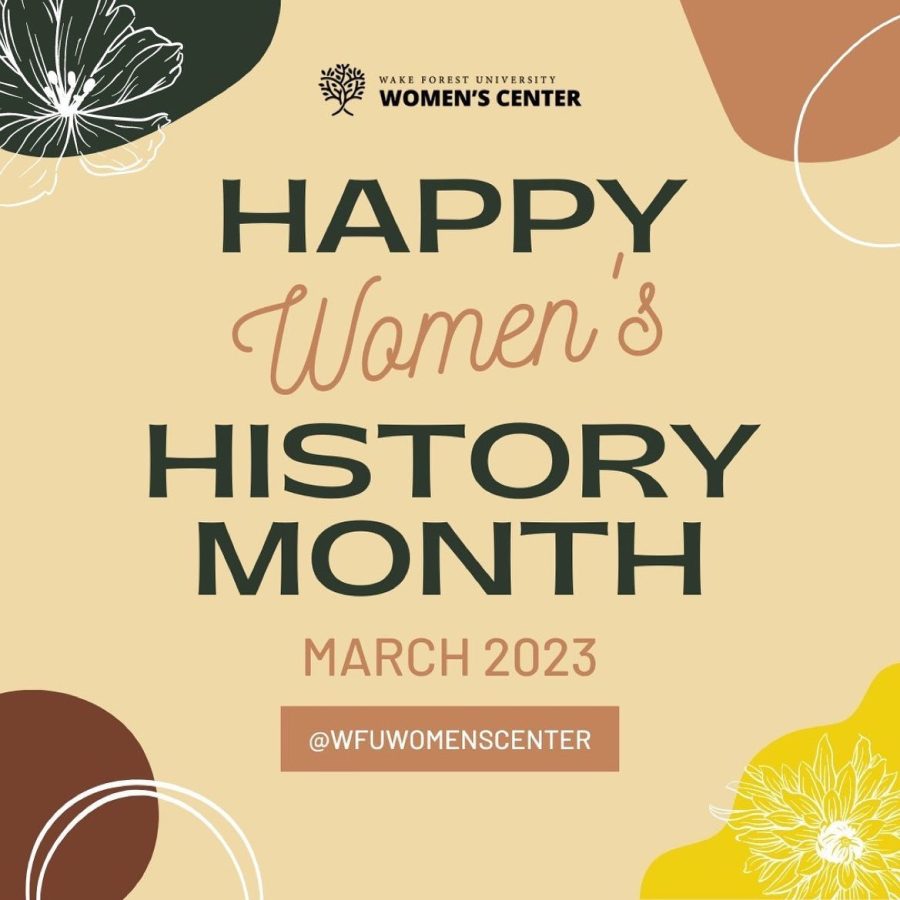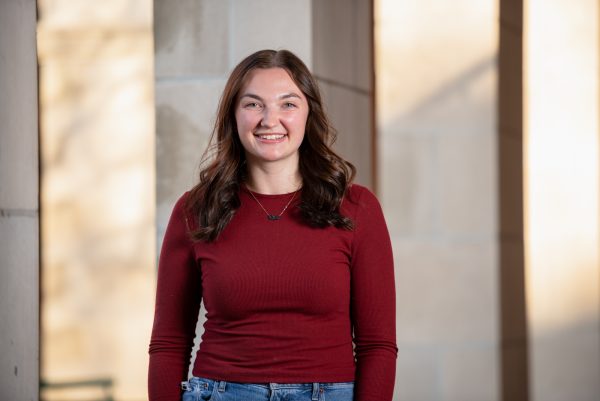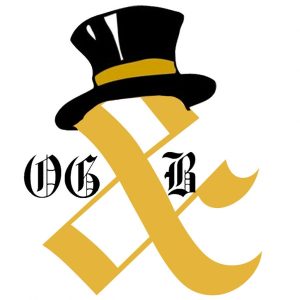“Elevate and Celebrate”: Women’s History Month events highlight intersectionality
The Women’s Center collaborated with various campus and student organizations to uplift women’s voices
A flier from the Women’s Center advertises Women’s History Month.
March 31, 2023
More than 20 women gathered in the Black Student Alliance lounge for a casual evening of mentorship and community on March 15, sharing stories and snacks as part of the Women’s Center Girls Night.
“It was so sweet because it was not just freshmen being forced to be together and talk about something that isn’t talked about,” freshman Zoe Brown said. “It was good because it was more of a ‘big sister’ kind of atmosphere.”
Girls Night was one of more than 20 campus events celebrating this year’s Women’s History Month. Partnering with various campus and student organizations, the Women’s Center hosted programming to uplift female voices and focus on gender equity, according to Assistant Director of the Women’s Center Hannah Rehm.
“Our main focus this year was to highlight Wake Forest students, staff and faculty for whom ‘woman’ is a lived experience, and have used their position to promote gender equity,” Rehm said. “We wanted to celebrate the work these individuals have done on our campus.”
Women’s History Month celebrations kicked off on Feb. 25 with the Daring Deacon Drag Brunch, which accepted nominations for Wake Forest community members who have advocated for gender equality. More than 100 people gathered in the University Activity Space, previously known as “The Barn,” to celebrate 10 individuals — students, staff and faculty — and watch two local drag queens perform. Rehm explained that the purpose of the drag brunch was to give students a space to have a party and celebrate each other.
“Everyone seemed to really enjoy it,” Rehm said. “They enjoyed their time here, so I think it achieved a space where people from different backgrounds and social circles were able to come together in a non-hostile space and party and have a good time. So that was definitely a huge win.”
Alongside promoting gender equity on campus, the Women’s Center aimed to uplift women of color. Wellbeing for Women of Color is a 10-day long program during Women’s History Month that held interactive events and programming that targeted mental and physical health. More than five student organizations partnered with the Women’s Center, LGBTQ+ Center and the University Counseling Center to support women of color during the month’s celebrations.
Brown expressed the importance of highlighting women of color’s experiences during Wake Forest’s Women’s History Month in order to advocate for positive mental health both in the workplace and academic spaces.
“I think it’s important to know that you don’t have to be this idea of Black excellence because whether you’re Black or Asian or Latino or Hispanic, you’re excellent,” Brown said.
Program Coordinator for the LGBTQ+ Center and the Women’s Center Antayzha Wiseman shared the process of establishing Wellbeing for Women of Color and the integral role students played in advocating for this group of women. The Women’s Center worked to expand the program from three programs to 11 different events — collaborating with various =student organizations.
“We wanted to hit every single group that could do programming for women of color,” Wiseman said. “We did some programming around poetry and the arts, and I think we have made some really good collaborations with student organizations. It’s really powerful when we as an office get to collaborate with student orgs and resource them.”
According to Wiseman, the Shea Moisture event on March 1 was particularly successful.
“We had an event called Shea Moisture in collaboration with the Office of Wellbeing that was about the politics of hair, natural hair care and how people feel comfortable showing up wearing their natural hair,” Wiseman said. “This was a collaboration we did with [Vice President for Campus Life] Dr. Shea Kidd Brown. We had probably more than 40 people show up in a room on the fourth floor of Benson and had a really good talk, and we were able to pass out some really good hair supplies.”
Because Women’s History Month organized a plethora of events, students could attend programming in which they were interested. Both Rehm and Wiseman were pleased with the student engagement these events incited. They attributed their success to their mindset while planning — focusing on student interests and wishes rather than the number of attendees at each event.
“We just really focused on what our student assistants were saying would be cool to do,” Rehm said. “What are the students that frequent the centers saying would be fun? It gave us the freedom to listen and focus on that and really let go of mindsets such as ‘but are we going to have X amount of people show up, what does that mean for a successful program?’ And I think that helped everything flourish.”
Women’s History Month programming concluded on March 29 with a Women’s Only Climbing Night sponsored by Outdoor Pursuits. However, celebrating Wake Forest women extends beyond Women’s History Month. The Women’s Center aims to cultivate a space where women can gather and find community every day of the year.
“Women’s History Month is just a time where we can really elevate and celebrate the work that we’re always doing,” Rehm said. “This isn’t just a March thing for us. We’re here, and we’re a safe space for people to land. And whether that’s just hanging out, taking a snack or investing in the programming that we do, we’re here for them.”















